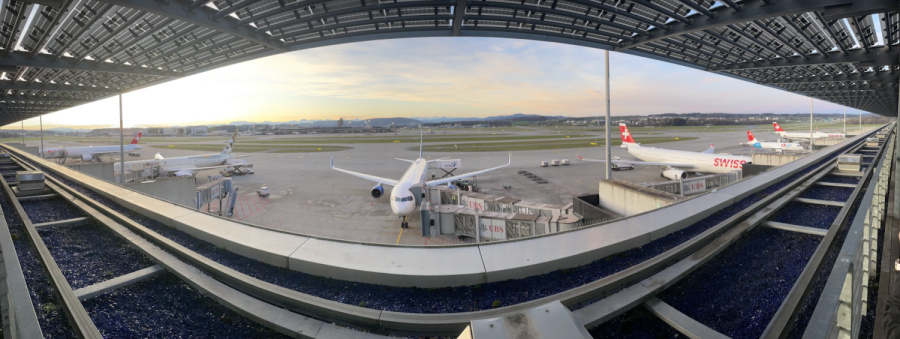Aerospace Engineering: An Interdisciplinary and Growing Field
“That’s one small step for a man and a giant leap for mankind.”
Sunrise at Zurich International Airport. Featured planes: SWISS B777, Etihad B787, United B757, SWISS A330, CHair A320.
January 27, 2023
That quote from Neil Armstrong perfectly encapsulates the interdisciplinary nature of aerospace engineering and its impact on humanity. Aerospace is not merely the study of rockets and aircraft systems; it is the embodiment of human audacity. Neil Armstrong participated in humanity’s most pioneering aerospace venture; the mission that took Neil Armstrong to the moon. It was an interdisciplinary initiative of massive proportions. Research was conducted in every discipline of STEM, from aerospace and electrical engineering, to geology and biology. In fact, the entire Space Race and Apollo 11 mission started from a political competition between the United States and the USSR for global dominance. Armstrong’s legacy is a testament to how aerospace engineering brings together geopolitical drama, life sciences, and engineering itself, all while having the human tenacity to realize a dream inspired by President Kennedy.
Even today, aerospace engineering involves studies across disciplines. Hypersonic research is a major research field in aerospace engineering. This potential for faster travel on Earth and in space presents potential for an even more connected planet. Hypersonic technology isn’t only limited to aerospace though. The medical field has seen a breakthrough with recent hypersonic research as well. Micro-sized medical tubes that are capable of creating hypersonic shockwaves can be used to administer vaccines and drugs in a painless, contactless way. It does this by shooting the medicine into your body at very high speeds, penetrating your skin tissue, and entering your body without any needles. Right now, hypersonic syringes can deliver intramuscular injections, and soon might be able to deliver intravenous injections to your bloodstream as well. This technology is safer and more sustainable than typical medical needles. Children could be vaccinated without any tears, and medicine dependent seniors could be administered drugs without contact.
Looking at the stars and gazing into space has also been a great inspiration for the arts since the dawn of humanity. With advances in modern technology, aerospace has enabled a whole new era of artistic imagination. The famous “pale blue dot” picture from Voyager 1 has made humanity realize its insignificance in the cosmos, and inspired a realization of life’s preciousness on our blue planet. The images from the new James Webb Space Telescope of distant galaxies, or pictures of Pluto and Jupiter from various satellites have the potential to inspire our poets, authors, and artists, with a new and expanded vision of reality.
Aerospace at its core enables connections between people and helps us explore the boundaries of the universe. As humanity dawns on the prospect of deep space exploration and venturing into the unknown, we ought to embrace the unfamiliar among us in order to connect people, helping continue building bridges across cultures.


